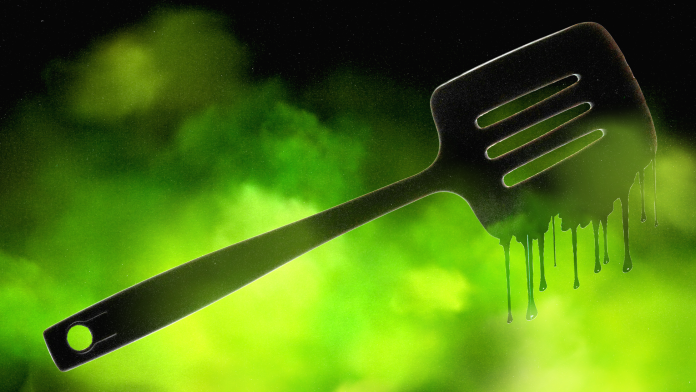Hidden Dangers of Toxic Flame Retardants in Black Plastic Kitchen Utensils
If your kitchen drawers hold black plastic spatulas or other household items such as takeout containers and toys, it’s time for a serious reconsideration. Recent research highlights that these items might contain high levels of toxic flame retardants in black plastic—chemicals known to pose significant health risks.
Alarming Findings
A groundbreaking study conducted by Toxic-Free Future and Vrije Universiteit Amsterdam shed light on household items. The research, published in Chemosphere in early October, found that products including spatulas, sushi trays, and even beaded necklaces harbored these toxic substances. Megan Liu, a coauthor of the study and science and policy manager at Toxic-Free Future, emphasized the urgency of the findings:
“These cancer-causing chemicals shouldn’t be used to begin with, but with recycling, they are entering our environment and our homes in more ways than one,” she said.
Why Are Toxic Flame Retardants in Household Products?
The answer points to the flawed recycling process involving electronics. Electronics are often covered with plastics containing toxic flame retardants, which prevent fires. When these items are recycled improperly, contaminated plastic can make its way into consumer products, including black plastic kitchen utensils. Researchers discovered that plastics typically used in electronics have higher levels of these hazardous chemicals compared to other types, such as nylon.
In 2018, Andrew Turner, a biochemist from the University of Plymouth, noted the connection between toxic flame retardants in black plastic and electronic waste, writing that there’s “mounting evidence that the demand for black plastics in consumer products is partly met” by recycled electronics. This “dirty” recycling process can result in toxic-laden products entering homes, sometimes without consumers’ awareness.
Changes on the Horizon for Black Plastic
Thankfully, regulatory shifts are beginning to address toxic flame retardants in black plastic. In December 2024, New York will enforce a ban on organohalogen flame retardants (OFRs) in plastic enclosures for electronic displays, such as TVs. Washington state will follow in January 2025 with a ban on these flame retardants in all indoor electronic enclosures.
While some have been banned for years—such as decabromodiphenyl ether (decaBDE), which was fully banned by the EPA in 2021—the new study uncovered concerning evidence that these banned substances are still present in black plastic household items. For example, a black sushi tray tested in the study contained 11,900 parts per million of decaBDE, far exceeding the European Union’s regulatory limit of 10 parts per million. One toxicologist remarked to CNN that finding these chemicals in current products is “especially concerning.”
How to Protect Your Household from Toxic Flame Retardants in Black Plastic
The findings point to a clear need for stronger regulations on plastic production, including bans on hazardous chemicals and more stringent recycling practices. Toxic-Free Future advocates for robust policies such as those outlined in the Global Plastics Treaty to prevent contaminated black plastic from entering everyday products.
For now, experts recommend replacing black plastic kitchen utensils with safer alternatives, like stainless steel or wooden tools. One surprising element from the study? Many of the over 200 tested items were not labeled as recycled, leaving consumers unaware of their origins.
Mike Schade, director of Toxic-Free Future’s Mind the Store program, urged businesses to take responsibility: “As businesses introduce more and more recycled materials into everyday products, retailers must require suppliers to test them to ensure toxic chemicals aren’t hiding in these recycled plastics,” he said.
If you’re still using black plastic spatulas or takeout containers, consider making the switch to safer, non-plastic options. This simple change could help protect your household from exposure to potentially dangerous toxic flame retardants that are hiding in plain sight.








